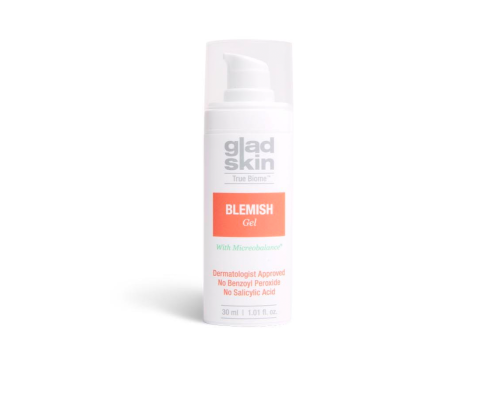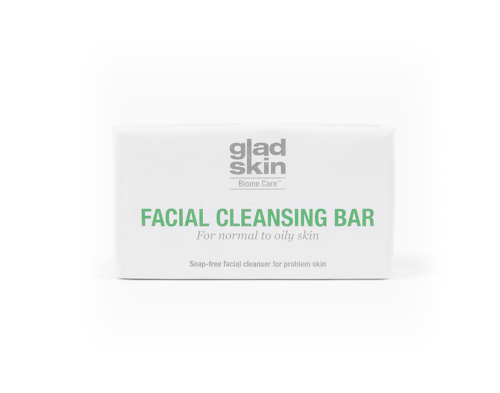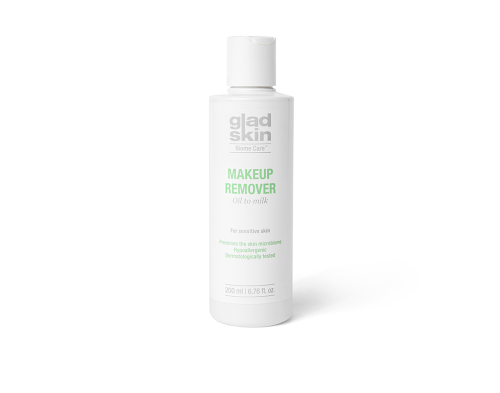‘I’m a Dermatologist, and This Is One Thing I Wish Adults With Acne-Prone Skin Would Add to Their Routines’
Take it from the experts: Once you hit your 20s, your approach to skin care should change even if you're still dealing with frequent breakouts, according to board-certified dermatologist Elizabeth Bahar Houshmand, MD, director of Houshmand Dermatology and Wellness.
"Acne products aren't simply one-size-fits-all, and different breakouts require different approaches," Dr. Houshmand says. "The skin of teens is typically oilier than that of adults and can tolerate more potent and drying acne medications. Milder and less drying products, paired with an oil-free moisturizer, are usually better for adult, acne-prone skin."
If you're scratching your head and wondering how the heck you're supposed to keep blemishes at bay without slathering on the salicylic acid and benzoyl peroxide (they've been your go-to's for years!), Dr. Houshmand has a product rec that takes a gentler approach without skimping on results: Gladskin Blemish Gel with Micreobalance®.
The topical solution for blemish-prone skin works to balance the skin's microbiome (rather than going the typical, aggressively drying route) to help your complexion start to look clearer and less irritated. Intrigued? Keep reading for more intel from Dr. Houshmand on why you might want to rethink your go-to acne solutions.
Shop Solutions for Acne-Prone Skin
The difference between adult acne and teen acne
In order to understand why you might want to switch up your treatment methods, you have to understand the difference between adult acne and adolescent acne.
Teenage acne tends to appear on the cheeks and forehead, whereas adult acne typically occurs around the chin and mouth. And while teenage acne is generally a result of high hormone levels during puberty, Dr. Houshmand says that adult acne can be caused by a combination of factors, including stress, inflammation, genetics, hormonal shifts during pregnancy and menstruation, bacterial imbalances in the skin microbiome, and using the wrong products for your skin (are you sensing a theme here?).
How to manage adult acne
Teenage acne often subsides after puberty, but (unfortunately) there is no official end age for adult acne—which makes it even more important to know the most beneficial ways to manage it.
Dr. Houshmand has two overarching tips: Never go to bed without washing your face (especially if you're wearing makeup), and focus on balancing your skin's microbiome, aka your complexion’s community of bacteria.
“In people with acne, opportunistic bacteria can overgrow, dominate the skin microbiome, and disrupt oil production," Dr. Houshmand says. "That bacterial imbalance is called dysbiosis, and it triggers an inflammatory response.”
That inflammatory response can present on the skin as dryness, dehydration, and breakouts, but when you bring the microbiome back into balance, it decreases inflammation and can lead to an improvement of acne symptoms, Dr. Houshmand says.
How to balance the skin microbiome
Dr. Houshmand recommends Gladskin Blemish Gel to her patients with adult acne both because of the microbiome-balancing ingredients it contains, and because of what it leaves out.
“Micreobalance® is Gladskin’s proprietary smart protein that rebalances the skin microbiome and creates an environment where good bacteria can thrive,” Dr. Houshmand says. “It’s an endolysin, which is an enzyme that works to destroy bad bacteria and restore balance to the microbiome.”
She also likes that Blemish Gel is hydrating—something that many other topicals for acne-prone skin overlook. "It’s a myth that acne-prone skin does not need moisturization," Dr. Houshmand says. "It may actually be more dehydrated and would benefit from skin barrier optimization."
In terms of what it leaves out, the product doesn’t contain fragrances, drying alcohols, gluten, or parabens, which Dr. Houshmand notes have been linked to hormonal imbalance and subsequent breakouts.
In short: Gladskin’s Blemish Gel takes an unexpected approach to acne-prone skin by nourishing and balancing, not over drying. Thanks to its skin microbiome-balancing properties, it earns a spot on Dr. Houshmand's must-try list.
Top photo: Stocksy/ohlamour studio
Loading More Posts...


